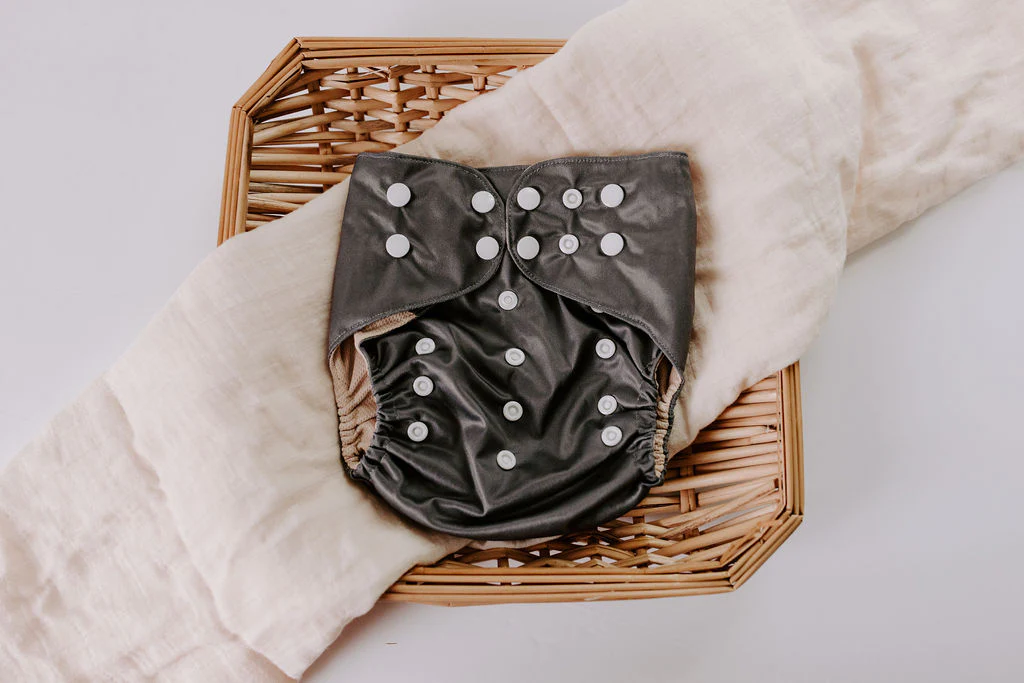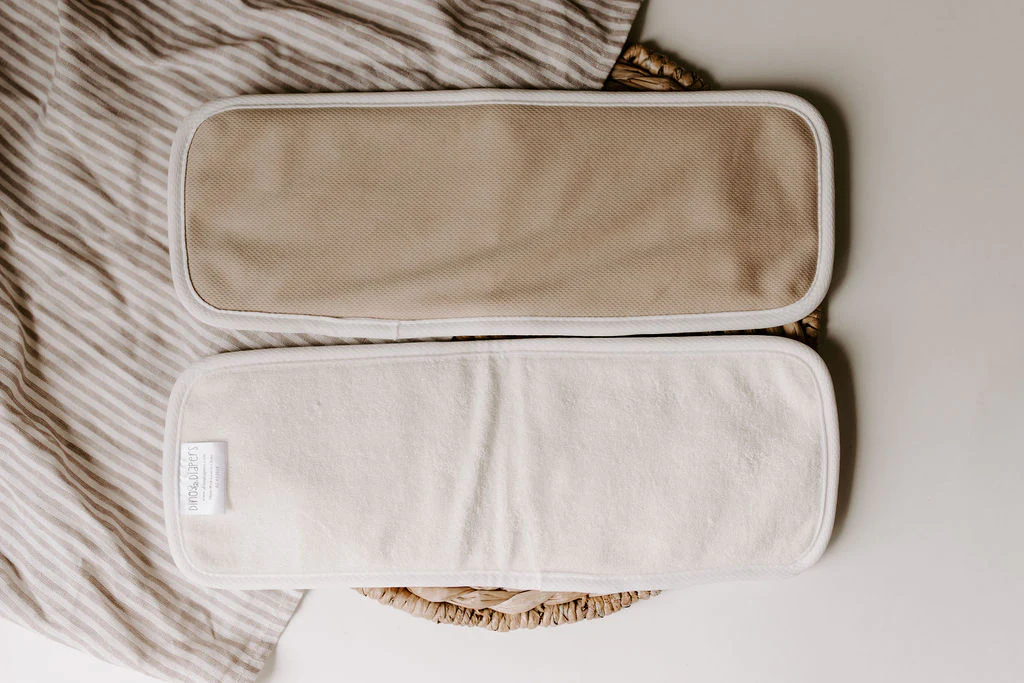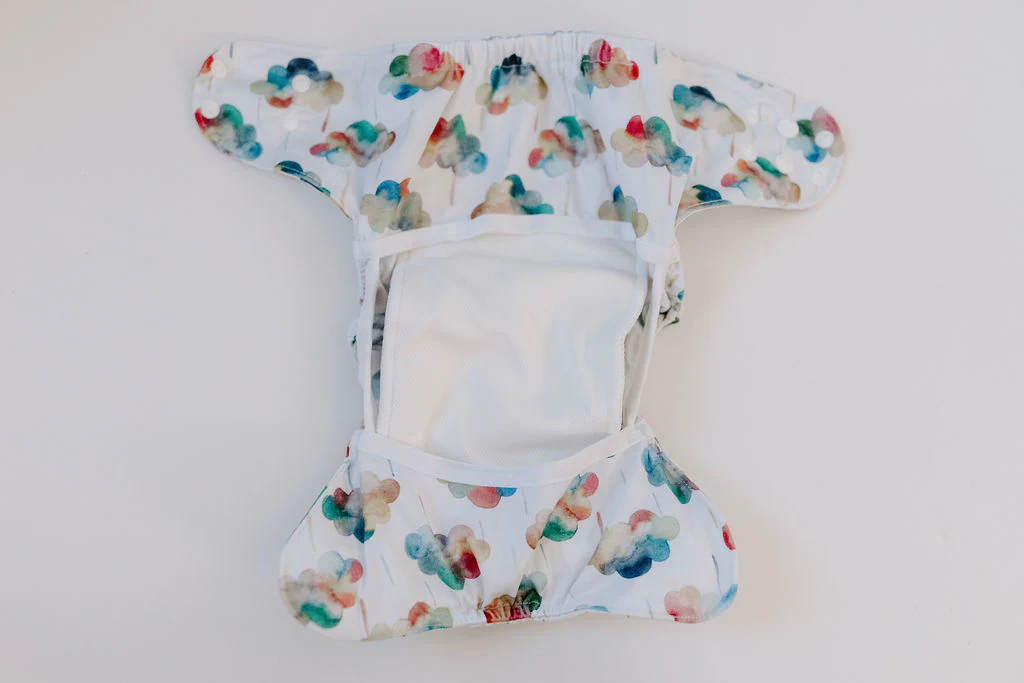Living in a rural area with extreme weather I take preparing our 72-hour kits very seriously. However, I’ve always been stumped on how to manage diapers. With two little ones still in diapers, if I were to stash 72 hours worth of diapers I would need at least 15 diapers in one size and 24 diapers in another. Then there’s a whole slew of additional logistics, like:
- My baby is in size 1 now, do I stash size 1 or size 2?
- What happens if I don’t have access to more diapers after 72-hours?
- What if we go through the diapers much faster than what I allotted?
- How much physical space should I dedicate to just diapers?
I’m sure there’s more, but you get the idea.
On the eco-friendly front, I’ve observed that regular diapers contribute to about 50% of our garbage each week. Because of this I’ve put in a lot of research trying to figure out if switching to cloth diapers would be worthwhile. However, I’ve never been brave enough to pull the trigger.
Well, on a 10 day trip to a remote cabin I had the opportunity to kill two birds with one stone. Since there’s no garbage service, we have to haul all our garbage away ourselves. I was not looking forward to hauling 10 days worth of dirty diapers in the back of my car for an hour and a half to the nearest disposal facility. This was the perfect opportunity to try out cloth diapering and see if they’d work for the 72-hour kit and/or for replacing regular diapers for good.
Picking the Right Cloth Diapers
Before I could run my experiment I needed to pick a type of cloth diapers. Since I wasn’t sure if I’d be up for cloth diapering long-term, I decided to focus on picking cloth diapers that would work best for the 72-hour kit. This meant the diapers needed to:
- Fit babies from newborn to toddler. I don’t want to have to worry about having the right size in an emergency.
- Be relatively compact. I want to be able to reasonably carry all the diapers I need in a backpack without sacrificing space for other essentials.
- The whole system needs to be reusable. This means that the whole system is washable, so no liners for easily tossing out solids [sigh…].
Cloth diaper pockets (the outer part of the diaper) with snap “risers” (which allow you to adjust the diaper to any size between 8lbs-65lbs) and 1-2 thick liner inserts seemed to check all the boxes above. I bought 14 pockets and 25 inserts from Dino Diapers, which would give me about a day and a half of diapers. I decided I didn’t want to get more than that because I was trying to keep the amount of space they took up to a minimum. Of course, this meant that I would have to do laundry every day, but I accepted that trade-off.



The 10-Day Experiment with Cloth Diapers
I was able to fit all of the inserts and pockets in a packing cube that is 14"x14"x5". It was dense and a little heavy, but it compacted down well enough to fit other essentials in the bag alongside it.
Diapers in hand, the first day of the 10-day experiment started out pretty well. Adjusting the sizes for each child using the snap risers was easy enough, and I wasn’t having any more leaks or blow-outs than normal. When my toddler would go poop, I’d have to walk it out to the outhouse to dump it, but otherwise it was fairly comparable to regular diapers.
Day 2 was the first day I had to wash diapers. Since there was no washer/dryer set-up at the cabin, I had to hand wash them. This worked in my favor because I wanted to know if this was viable in a scenario where we don’t have access to a washer/dryer. So, I threw them in my little hand-wash bag and washed them like I wash our clothes - one cycle with soap and water, one cycle with only water to rinse - and then hung them to dry. However, I realized as I was hanging the diapers up that some of them didn’t quite look clean enough, and ended up rewashing a few.

By day 4 I had a three cycle system. First, I’d rinse each diaper insert and pocket with water. I’d scrub out any lingering stains and make sure that each one got completely saturated with water before ringing them out and placing them in my wash bag. Then I’d wash them like normal. I found this process did a much better job at getting the diapers clean than just throwing them straight into the wash bag.
Around day 6 I was starting to have a hard time keeping up with the laundry. Not only was it taking a lot longer to wash them out than I had planned, but the inserts were taking 14+ hours to air-dry! And this was in 90 degree weather in a dry climate… Since I had bought twice as many inserts as pockets it took a few days before I started having issues, but once I was behind it became really difficult to play catch up.
Day 9 plans changed a little and I decided to go back to using regular diapers for the remainder of the trip. I was losing access to where I had been drying the inserts in the sun, which would make the inserts dry even slower, further exacerbating the problem. But I decided to continue to dump the poop in the outhouse to keep the smell down in the cabin.
What I Learned From Cloth Diapering for 10-Days
Good things about cloth diapers:
- Cloth diapers aren’t as bad as I was led to believe, at least for nursing babies. Since my littlest isn’t eating solid foods, yet, dealing with the dirty cloth diapers weren’t really any different than dealing with regular diapers. For solid poop though, the extra step of dumping the diaper (and sometimes having to scrape the diaper off) is not so fun.
- Being able to use the same diapers for both my kids is great. Not having to dig through my diaper stash to make sure I have the right size and not having to keep track of how many I have left for two different sizes makes packing and planning a ton easier.
- Not having the smell of dirty diapers. Regular dirty diapers start to smell after only a few hours if you don’t have them in a well closed garbage can. I didn’t have any problems with the cloth diapers stinking up the cabin or the car.
Bad things about cloth diapers:
- Hand washing cloth diapers is time-consuming. On the days where I was washing a full day’s worth of diapers, it would take me about an hour to an hour and a half to wash and lay out all the pockets and inserts.
- Air-drying inserts takes a really long time. The inserts are made to absorb as much liquid as they can, which they are very good at, but they are not so good at drying out. Even in a hot and dry climate it was still taking 14+ hours to have them dry out.
Things to do for next time:
- I should’ve bought “covers” instead of “pockets” for the exterior. At least with Dino Diapers, when you use the “pockets” the pocket and the inserts get dirty every time they’re used, because the inserts go inside the pocket. With the “covers” you have the potential to reuse the cover if it isn’t soiled, because the cover leaves the inserts exposed in the middle and only covering the top and the bottom of the inserts to keep them in place. (In the images below, the first is an example of a pocket with a slit near the top for the inserts vs the second one is a cover where the inserts are exposed in the middle.)


- My wet bag was not big enough. I had bought a wet bag from Marley’s Monsters before this experiment and didn’t really consider how much room the dirty diapers would require. This wet bag was only comfortably able to fit 6 pockets and 10 or so inserts before overflowing. I was averaging more like 10 pockets and 16 inserts a day and had to find other places to put the wet, dirty diapers.
- My clothes line was not big enough. I already had a travel clothes line that’s about 8 feet long. This just was not big enough to hold all the pockets and inserts, let alone any other clothes I needed to dry that day. I needed 3 to 4 times this length to fit everything.
- My clothes line was not optimally placed for quick drying. When we travel, we bring clothes that dry quickly so we’ve never had to worry about where we place the clothes line. With the inserts, though, it’s a different story. I really needed to have the clothes line in direct sun all day for the inserts to dry at all, and, unfortunately, the cabin didn’t really have somewhere to do this.
Am I Including Cloth Diapers in My 72-Hour Kit?
After my little experiment, I do think that including cloth diapers in my 72-hour kit is a reasonable alternative to regular diapers. I love that I don’t have to worry about what sizes to keep or how many, and even though they have to be washed, I don’t really have to worry about running out.
However, because it took a lot of water to clean and a long time to dry the diapers, there are a few caveats:
- Wintertime diapering poses some issues with cleaning and drying the diapers in a timely manner.
- Access to a lot of water is a must.
I also plan on making a few adjustments to some of the equipment I had already owned before the experiment, but fell short.
- Buy a bigger wet bag.
- Include a second and maybe third clothes line.
- Potentially replace the pockets with covers.
With those caveats in mind and changes made, I’m happy with how well the cloth diapers fit my requirements for the 72-hour kit and will be making the space for them during my next kit update.
Am I Making the Switch to Cloth Diapering Full Time?
What about switching to cloth diapering full time? Short answer, probably not completely. While most of the issues I encountered during my experiment were related to hand washing and air-drying the cloth diapers, which I wouldn’t have to worry about at home, I’m still not totally converted. If I were to do cloth diapering, I would still end up buying regular diapers for family members, babysitters and just in case I got too lazy to do the laundry. I’d definitely want to switch from pockets to covers, and I’d also like to find disposable/flushable liners for on top of the inserts for getting rid of solids. I’m not quite ready to make the financial and time investment those changes would take, so for now I’ll be sticking with regular diapers.